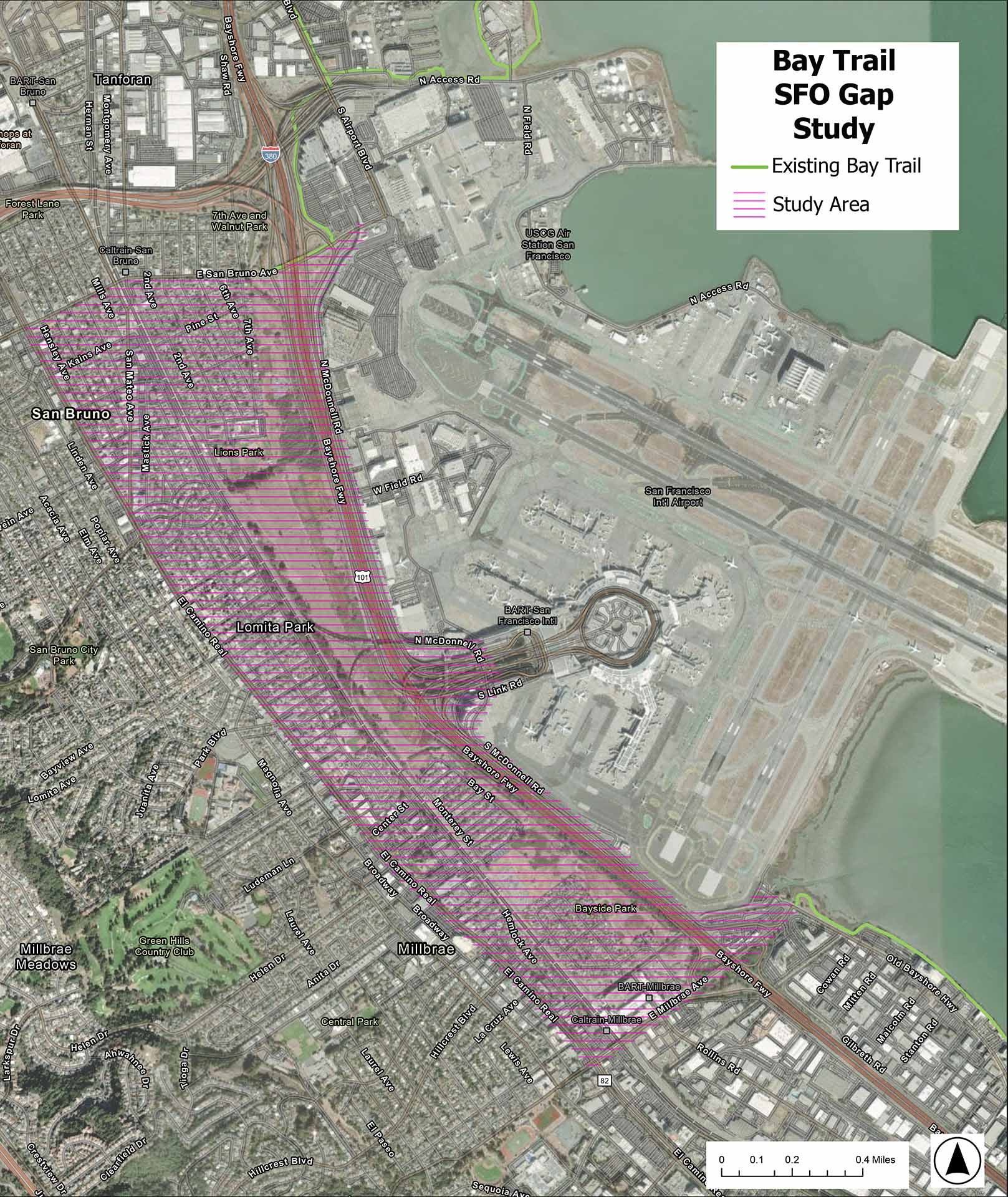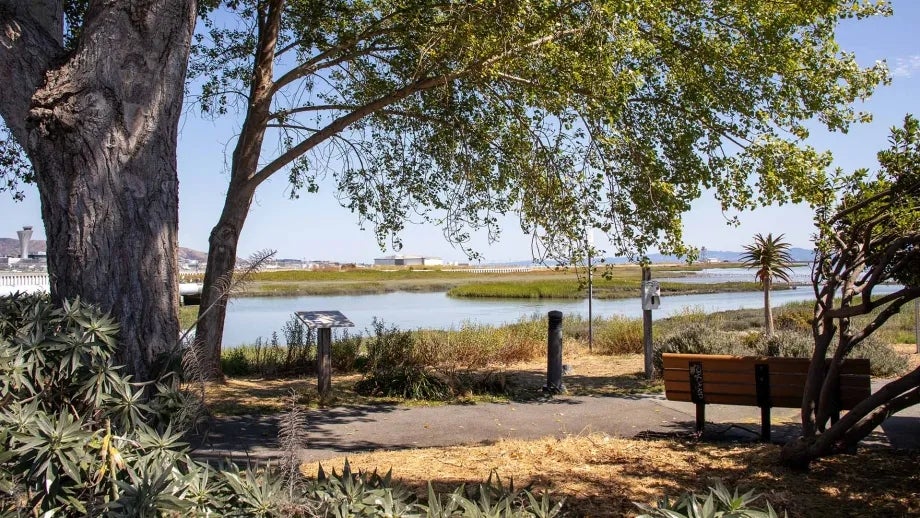Bay Trail SFO Gap Study
The Bay Trail SFO Gap Study will identify potential Bay Trail alignments to close the three-mile Bay Trail gap around San Francisco International Airport.
The vision for the San Francisco Bay Trail is a continuous, 500-mile trail around San Francisco and San Pablo Bays that serves 47 cities in all nine Bay Area counties.
Today, there is a three-mile gap around San Francisco International Airport (SFO) and an opportunity for a new Bay Trail segment through Millbrae and San Bruno.
The Bay Trail SFO Gap Closure Study will document existing conditions and identify potential new Bay Trail segments near SFO. The study will also recommend a design for a future segment of the Bay Trail to close the gap in this area.
The 1998 San Francisco International Airport Bay Trail Alignment Plan (BTAP) developed a "preferred permanent alignment" of the San Francisco Bay Trail around SFO. This alignment, though not perfect, is one that can happen over time with ongoing stewardship, cooperation and sufficient funding.
The Bay Trail SFO Gap Study is reevaluating potential alignments, including the 1998 BTAP, given the 25-year-gap since the completion of the 1998 BTAP and the lack of Bay Trail development occurring during this timeframe in this area.
Project Timeline
| Date | Activity |
|---|---|
| Spring 2023-Summer 2024 | Community and stakeholder engagement |
| Spring/Summer 2023 | Study existing conditions |
| Summer/Fall/Winter 2023-2024 | Conceptual design alternatives and analysis |
| Spring/Summer 2024 | Develop preferred alternative 15% design |
| Late 2024 | Plan document/final study |
Funding
This project is funded by a $160,000 donation from the John and Gwen Smart Foundation.
Staff Contact
Diane Dohm
Phone: 415-778-4429
Email: DDohm@bayareametro.gov
This graphic shows existing portions of the Bay Trail (in green), as well as the area that will be reviewed in the Bay Trail SFO Gap Study (in red).
Many factors will be used to evaluate the proposed Bay Trail connections, such as length and cost, connectivity to destinations, constructability, environmental impacts and equity considerations.
Regardless of the option selected, the preferred alignment must work towards the overarching goals of the Bay Trail:
- Foster active transportation;
- Promote healthy communities;
- Facilitate environmental stewardship and education; and
- Increase equitable public shoreline access for all Bay Area residents and visitors.
There will be three phases of public engagement for this project.
Phase 1: Fall 2023
The goal of phase 1 is to better understand how and why people currently walk, bike and roll through the area; identify key destinations in the study area; and identify preferred trail user experience. A public survey was available in English, Spanish and Chinese through September 30.
Phase 2: Winter 2023-24
The goal of phase 2 is to share and request input on the alternative alignments and design assumptions.
Phase 3: Spring/Summer 2024
The goal of phase 3 is to solicit input on the preferred alternative alignment and design.

